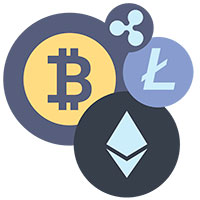On 26 July, the Federal Reserve approved an interest rate hike that prompted a US media frenzy of headlines about the rate reaching 22-year highs. The quarter percentage point increase (or 25 basepoint hike) will put the Fed fund rate in a range of 5.25% to 5.5%. Traders commonly believe that an interest rate hike strengthens USD instantly, especially when accompanied by media hype. There was an immediate 3.53% rise from $110.50 to $114.40, but the very next day, a rapid 5.17% decline to $108.48 hit long traders hard. Why is that?
The 22-year high is not as high as you might think. Back in 1981, the rate peaked at 19.04% before making a slow decline over the course of 26 years. Looking at the big picture doesn’t portray today’s interest rate as high. It only seems high when compared to the last recession.
Back in 2006, US interest rates were holding at 5.25%. A familiar number. When the 2007/8 recession kicked in, interest rates dropped to a rock bottom 0.16% and stayed there for 8 years. During that stagnant inflation period between 2008 and 2016, USD rose 51% from €0.64 to €0.96, suggesting that US interest rates had very little effect on USD in the big picture. Moreover, the graph clearly shows a divergence in recent years. Today, trader sentiment may cause fluctuations after announcements, but the notion that foreign investors will jump on USD just because of interest rates seems unlikely, unless the rate returns to those irresistible 1981 levels.
With two more interest hikes forecasted for 2023, some traders might be tempted to buy before the announcement and then sell if and when a micro rally peaks. That may have worked for traders in the past, but previous performance doesn’t guarantee future results, and a new dynamic might simply ravage your account in minutes. Never trade blindly on a hunch. Here are some deep insights from Barron’s that are a must-read for every USD trader following interest rates.
Data about bank lending practices coming early next week could offer clues about the Federal Reserve’s next move on interest rates. The Fed Senior Loan Officer Opinion Survey, a quarterly look at banks’ lending practices, is expected to be released at 2 p.m. Eastern time on Monday. Policy makers on the Federal Open Market Committee had early access to the results.
After announcing the 11th interest-rate hike since March of last year on Wednesday, Chair Jerome Powell said the data show banks were more hesitant to make loans in the second quarter than in the first. The important question is how much lenders have tightened their standards.
It matters because when banks become less willing to offer credit, it can have the same effect as an increase in interest rates by the central bank. Families and businesses find it more difficult, or more expensive, to borrow, which tends to limit demand for goods and services. Fed rate hikes are supposed to do the same thing. If the survey points to a significant credit contraction, it would add to expectations that the Fed might keep rates steady at its September meeting, rather than raising them to stamp out inflation. A more moderate credit contraction may strengthen the idea that this spring’s minicrisis in banking hasn’t affected loan standards much, with positive implications for economic growth. “A key feature shaping our U.S. rates outlook is an expectation that tighter bank lending standards will lead to a slowdown in growth,” Deutsche Bank strategist Matthew Raskin and his team wrote in a note on July 18.
Bank credit standards have steadily tightened relative to their low point in 2021. The Fed’s first-quarter report, released in May, showed 46% of some 84 bank respondents tightened lending terms on commercial and industrial loans for large and middle-market firms, compared with none in the same quarter a year earlier. The report for the fourth quarter of 2022, released in February, before the collapse of regional lenders such as Silicon Valley Bank, showed 44.8% of banks tightened their standards.
The Dallas Fed Banking Conditions Survey, a monthly lending indicator, lately showed that loan demand declined for the seventh time in a row in June. Economists and strategists have been looking at how changes in lending standards affect the economy, according to their recent notes. Citigroup (ticker: C), in a note on June 26, found that a 10-point tightening in credit standards lowers gross domestic product by as much as 0.5% over roughly two years. That indicates the tightening over the past year could mean the level of real GDP would be 2.5% lower than it would have been otherwise.
Goldman Sachs‘ (GS) Jan Hatzius in a note last month said “we expect tighter credit to subtract 0.4 percentage points from the fourth quarter GDP growth.” He argued that tighter credit could be beneficial in the fight against inflation, saying it “should be manageable and perhaps even somewhat helpful in restraining demand growth so that supply can continue to catch up.” For now, the economy is chugging ahead. GDP grew at an annual rate of 2.4% for the second quarter, up from 2% in the first quarter. Consumer spending is holding up despite inflation and higher interest rates. Data released Friday showed personal spending rose 0.5% in June, or 0.4% after adjusting for inflation, marking the largest monthly surge since the start of the year.
“The good news is that the U.S. economy has continued to show surprising resilience,” Citi global economist Robert Sockin told Barron’s on Thursday. “Moreover, some areas of lending like various consumer-focused loans have held up better than I would have expected.”
Points to watch once the lending data have come out include the inflation readings for July and August, as well as data on nonfarm employment for both months. The July jobs figures come out on Friday. The FOMC next meets Sept. 19-20.
















